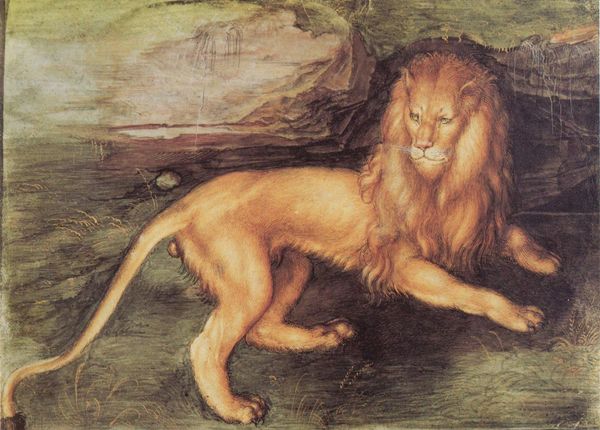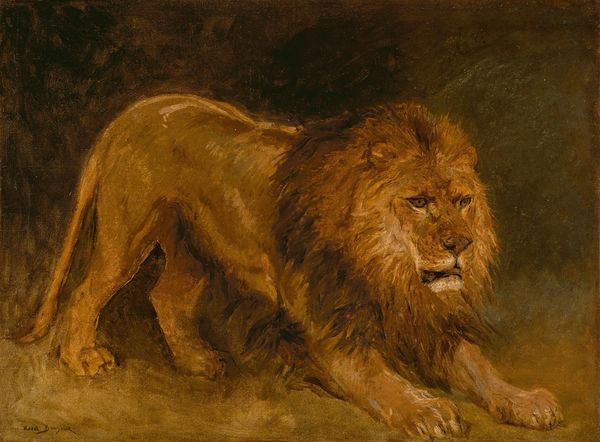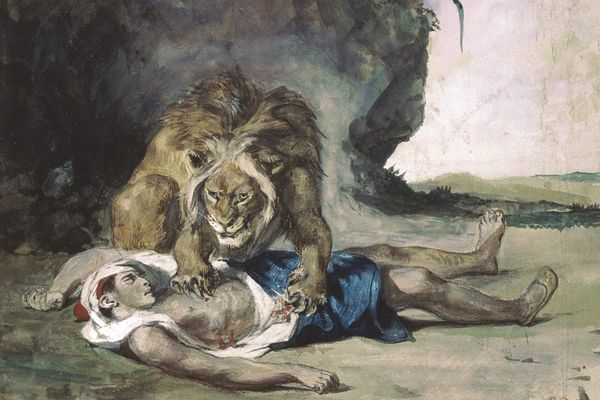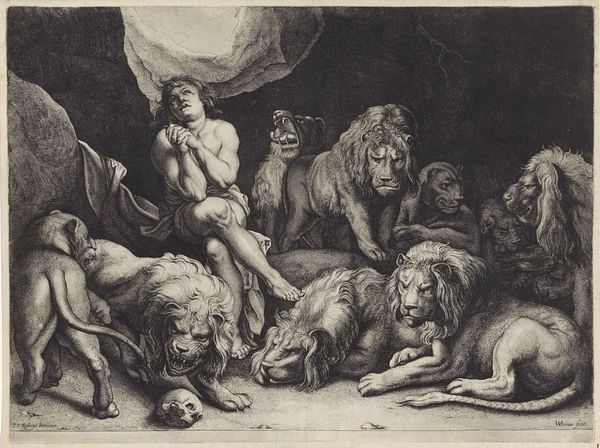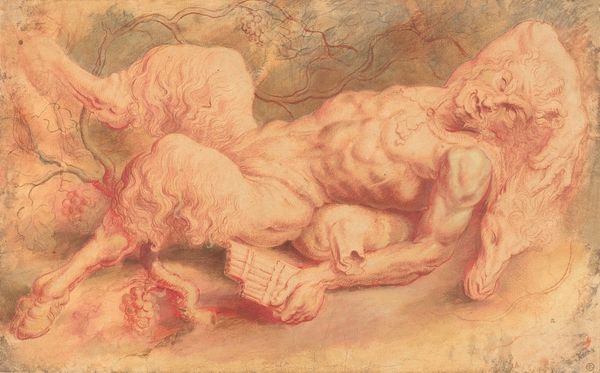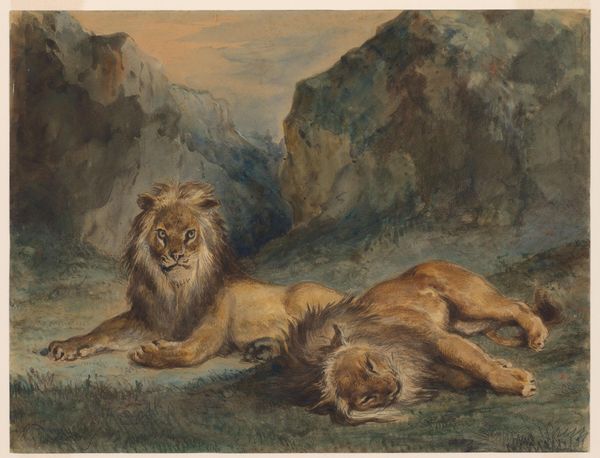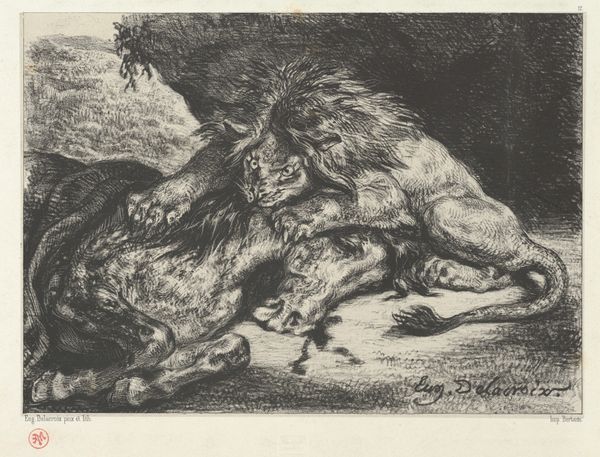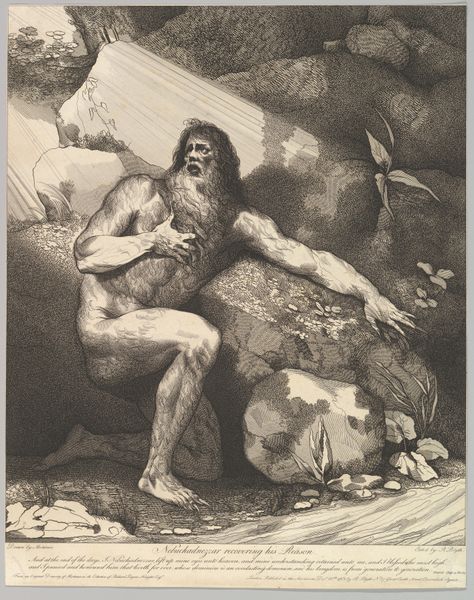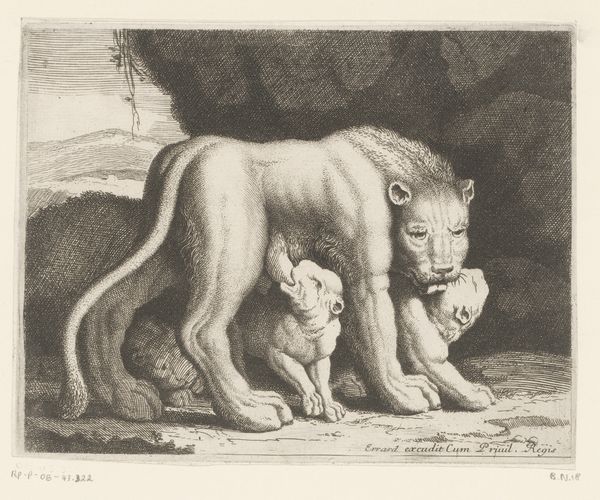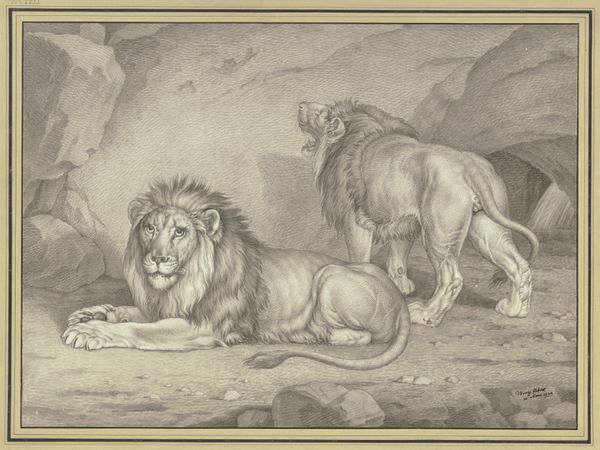
Dimensions: support: 543 x 725 mm frame: 661 x 829 x 50 mm
Copyright: NaN
Editor: So this is William Blake's "Nebuchadnezzar," housed at the Tate. What strikes me is the sheer desperation in his face, trapped in this almost animalistic pose. What’s your take on this image? Curator: It’s interesting you focus on the desperation. For me, it's Blake's way of showing us the raw, unfiltered consequence of hubris. Nebuchadnezzar thought he was a god, right? And Blake shows us the humbling, the stripping away of ego until all that's left is the beast. Editor: So, a cautionary tale then? Curator: Absolutely, but isn't it also a powerful depiction of inner turmoil? That beast, is it just Nebuchadnezzar, or a mirror reflecting our own potential for self-destruction? Editor: I hadn’t thought of it that way, as something universal. The vulnerability is definitely more apparent now. Curator: Blake always has layers, doesn't he? That’s why he’s so endlessly fascinating.
Comments
Join the conversation
Join millions of artists and users on Artera today and experience the ultimate creative platform.
tate 9 months ago
⋮
In the prospectus for his book, Varley announced his intention to include an engraving of Blake’s Nebuchadnezzar. This was never completed but, as with Ghost of a Flea, Varley may have been interested in the transformation of man into beast. The Bible describes how King Nebuchadnezzar was driven mad and forced to live like a wild animal as punishment for excessive pride. The association between moral corruption and bestial appearance is also suggested by Lavater, who traces a scale of perfection from the head of a frog to the face of Apollo (see the nearby panel). Gallery label, March 2011

